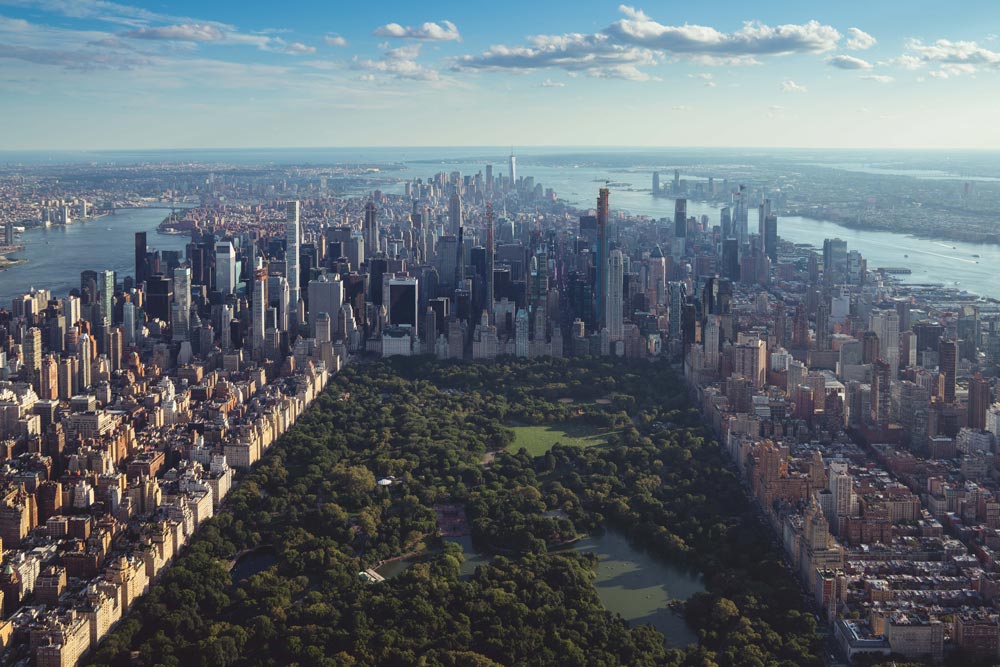An Architect who invented landscape architecture: Who is Frederick Law Olmsted?
When every landscape architect starts his education life, a name is mentioned: Frederick Law Olmsted. Landscape Architecture became a profession after Olmsted. The architect who designed Central Park in New York has successful landscape designs such as Prospect Park, Emerald Necklace and White House.

One of the symbols of New York City is Central Park. The idyllic garden between tall buildings and noisy streets is a favorite haunt of New Yorkers and visitors from around the world. Central Park, which is known as one of the most beautiful parks in the world, is perfect for those who are tired of the city chaos and seek an opportunity to relax in touch with nature without going too far. There will be many people who agree with this idea that 25 million people annually visit the park, which is full of all kinds of plants and animals.
Central Park was the first public park landscaped in the United States. Those who wanted the park to be built liked the parks in London and Paris very much and thought that New York needed such an area in order to gain international fame. The planned park, with attractive arrangements and equipment, offers a healthy alternative to saloons for the working class of New York. In 1853, 2800 acres of government land was allocated in midtown Manhattan for the purpose of park construction. This is an area obtained by the demolition of houses belonging to around 1600 poor families.
Regarded as the founder of American landscape architecture, Frederick Law Olmsted (1822–1903) is best known for designing the grounds of New York City's Central Park, the U.S. Capitol in Washington, D.C., the Biltmore Estate in North Carolina and the 1893 World's Columbian Exposition in Chicago.
In 1857, the Central Park Commission held the nation's first Landscaping competition, and from 33 projects was selected the Greensward Plan submitted by Frederick Law Olmsted (who is also the park's inspector), Calvert Vaux, and Andrew Jackson Downing. The designers wanted to create an idyllic Landscape, influenced by the British romantic movement.
800 m wide, 4 km long, this oxygen tank shelter; It is home to 120 different plant species, more than 26 thousand trees, 215 bird species and 130 animal species.
The park is not only used for residential and recreational purposes. The park, which has also become a cultural center; It is also used as a recreation area where people can do sports, organize festivals and stage plays.
One of the most attractive aspects of the park is that it has a large zoo for children. The zoo was renovated and reopened in 1997.
The park also has a monumental feature. After John Lennon was killed near the park in December 1980, the park still attracts Beatles fans. Each anniversary of the singer's death, the park gets crowded and a different landscape emerges.
Features of Central Park
- The construction of the park was completed in 15 years and cost 14 million dollars in terms of time. Today, it is estimated to be around 200 million dollars.
- 25 million people visit the park every year.
- There are 21 playgrounds in the park.
- There are 51 statues, 36 bridges and arches in the park.
- The park has 94 km of pedestrian roads, 7 km of horse-drawn roads, 11 km of vehicle roads and 11 km of benches.
- There are more than 26 thousand trees in the park.
- More than 275 species of migratory birds have been observed in the park so far.
Today, Central Park continues to progress thanks to the rapid developments and maintains its quality as a permanent legacy that the people of the city can pass on to the next generations.

The construction of the Central Park was a turning point for the development of cities.
Many architecture and urbanism professionals believe that Central Park is almost a great work of art and aesthetic object, or even the best thing in New York. No city in the world has achieved such perfection. Among all city parks, Central Park has unique features that can appeal to the mind and the senses and inspire.
